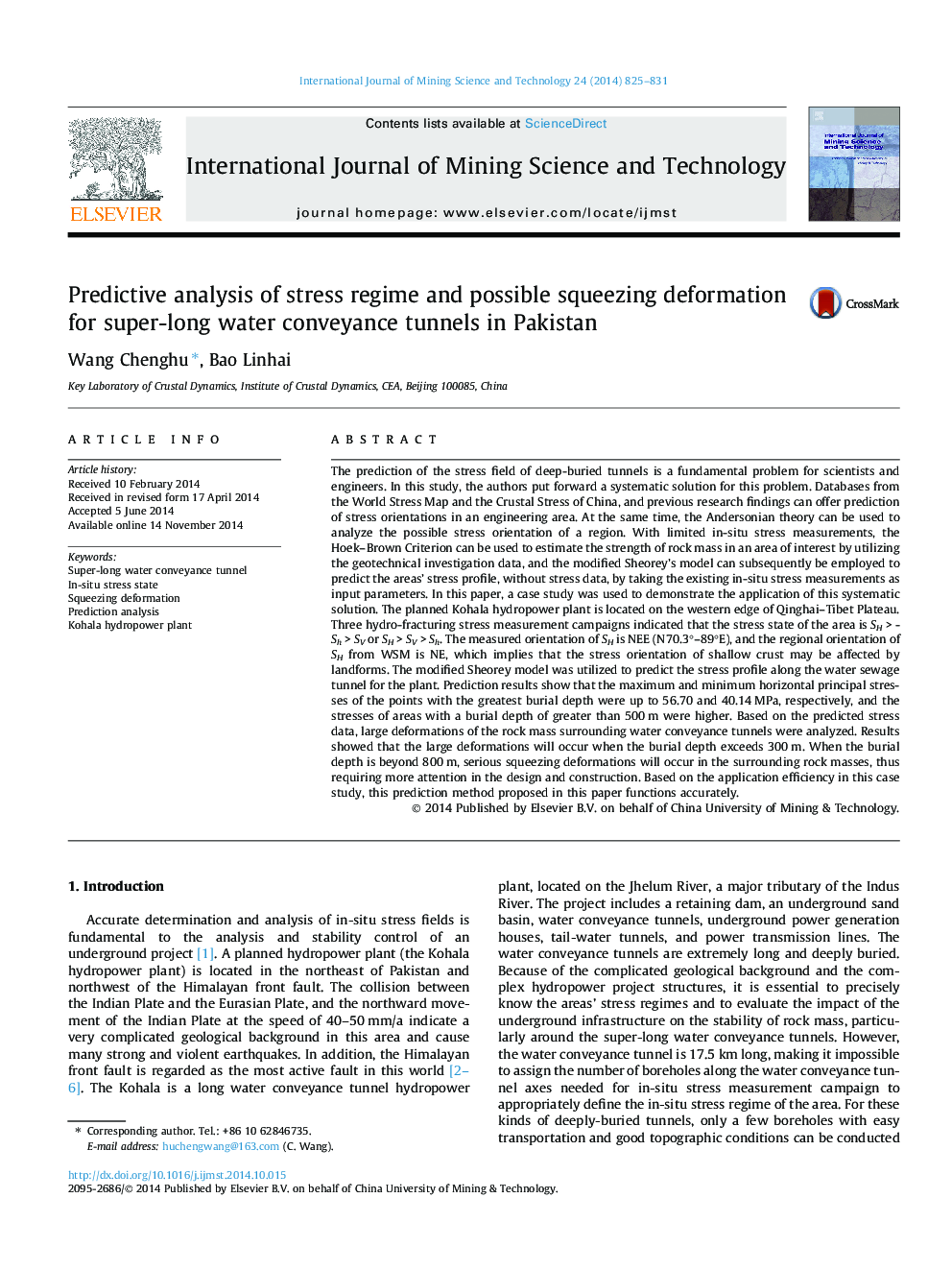| کد مقاله | کد نشریه | سال انتشار | مقاله انگلیسی | نسخه تمام متن |
|---|---|---|---|---|
| 275443 | 1429536 | 2014 | 7 صفحه PDF | دانلود رایگان |
The prediction of the stress field of deep-buried tunnels is a fundamental problem for scientists and engineers. In this study, the authors put forward a systematic solution for this problem. Databases from the World Stress Map and the Crustal Stress of China, and previous research findings can offer prediction of stress orientations in an engineering area. At the same time, the Andersonian theory can be used to analyze the possible stress orientation of a region. With limited in-situ stress measurements, the Hoek–Brown Criterion can be used to estimate the strength of rock mass in an area of interest by utilizing the geotechnical investigation data, and the modified Sheorey’s model can subsequently be employed to predict the areas’ stress profile, without stress data, by taking the existing in-situ stress measurements as input parameters. In this paper, a case study was used to demonstrate the application of this systematic solution. The planned Kohala hydropower plant is located on the western edge of Qinghai–Tibet Plateau. Three hydro-fracturing stress measurement campaigns indicated that the stress state of the area is SH > Sh > SV or SH > SV > Sh. The measured orientation of SH is NEE (N70.3°–89°E), and the regional orientation of SH from WSM is NE, which implies that the stress orientation of shallow crust may be affected by landforms. The modified Sheorey model was utilized to predict the stress profile along the water sewage tunnel for the plant. Prediction results show that the maximum and minimum horizontal principal stresses of the points with the greatest burial depth were up to 56.70 and 40.14 MPa, respectively, and the stresses of areas with a burial depth of greater than 500 m were higher. Based on the predicted stress data, large deformations of the rock mass surrounding water conveyance tunnels were analyzed. Results showed that the large deformations will occur when the burial depth exceeds 300 m. When the burial depth is beyond 800 m, serious squeezing deformations will occur in the surrounding rock masses, thus requiring more attention in the design and construction. Based on the application efficiency in this case study, this prediction method proposed in this paper functions accurately.
Journal: International Journal of Mining Science and Technology - Volume 24, Issue 6, November 2014, Pages 825–831
